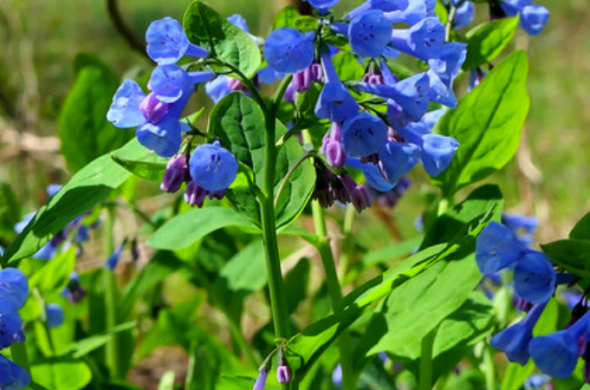Invasive Plants to Avoid: Porcelain-Berry
Porcelain-Berry (Ampelopsis brevipedunculata) is a woody, deciduous vine that climbs to 25 feet and can be found in Cherokee and Seneca Parks. Invasive by nature, Porcelain-Berry threatens our native plants and park ecosystems.
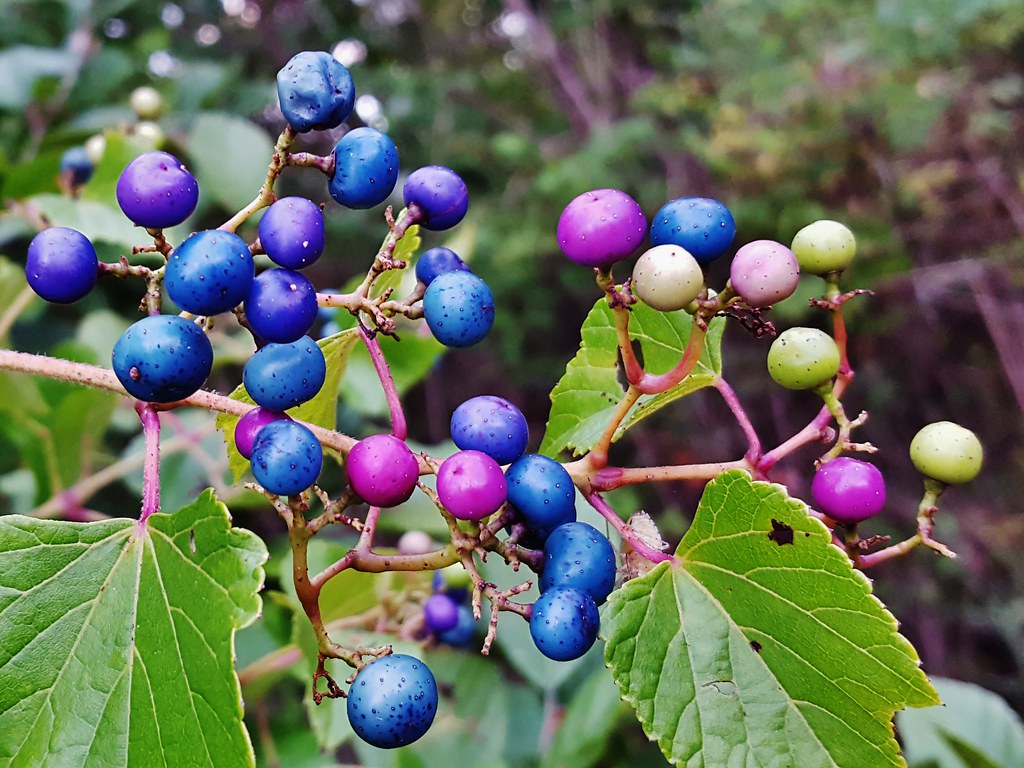
What does it look like?
Vines climb via tendrils and are similar to native wild grapes and other native species of Ampelopsis. The deep green alternate leaves are palmately 3-5 lobed, deeply dissected, broadly ovate with a cordate base, and have coarsely toothed margins. Non-showy clusters of greenish-white flowers form in leaf axils by mid-summer. The 2-4 seeded fruits start out pale lilac, turn green and finally mature to bright blue, resembling miniature bird’s eggs.
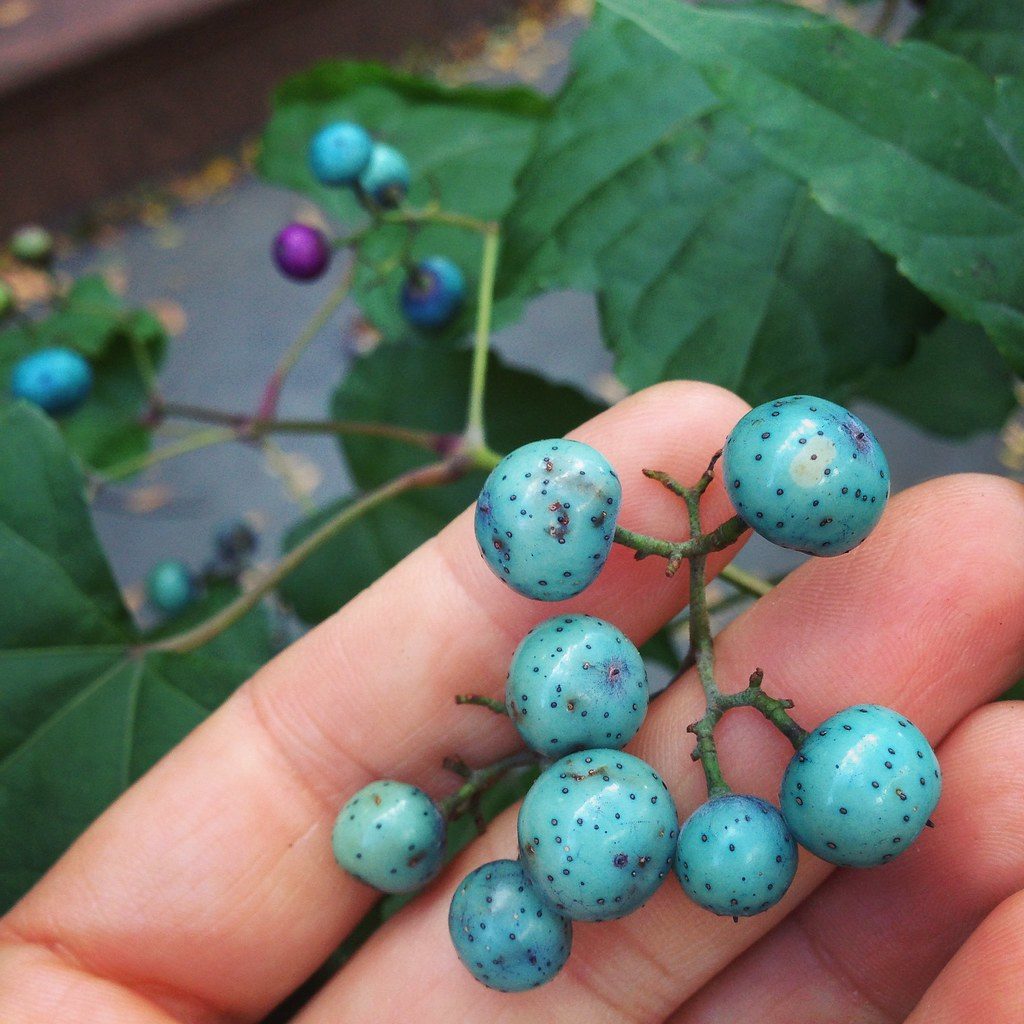
Porcelainberry invades open and wooded habitats, spreading by seed and vegetatively. The berries are attractive to birds and small animals. Infestations near water often spread downstream and it is believed that seed disperses by water.
Why is it bad?
Porcelain-berry spreads quickly in areas with full to partial sunlight, but appears less tolerant of the heavy shade of a mature forest. As an infestation grows, it covers nearby vegetation, shading out native plants and destroying habitat. Like all invasive plants, Porcelain-Berry grows rapidly because it did not evolve here with the checks and balances of competition from the plants and animals that live here. Instead it takes the place of the plants that supply the resources our native wildlife needs.
How did it get here?
A native of northeastern Asia, porcelain-berry was originally cultivated around the 1870s as a bedding and landscape plant. Despite its inclusion on many invasive plant lists (it is even outright banned in Massachusetts)—porcelain berry is still planted ornamentally. Even though many local nurseries have phased out its sale, I readily found seeds and seedlings for sale online, with little to no warning about its invasiveness.
Native Alternatives
Pepper-vine
- (Ampelopsis arborea) grows to 35 feet or more and can be used as a groundcover or trained to climb a trellis. Its dark green leaves are bipinnately compound with coarsely toothed leaflets.
- Blooming in July and August, the inconspicuous flowers attract a variety of pollinators. The berries range in color from pale pink to purplish-black and provide food for songbirds and mammals.
- Pepper-vine is well-suited to partial shade to full sun and can grow in a variety of soils. Its fast growth can be maintained with regular cutting and mowing.
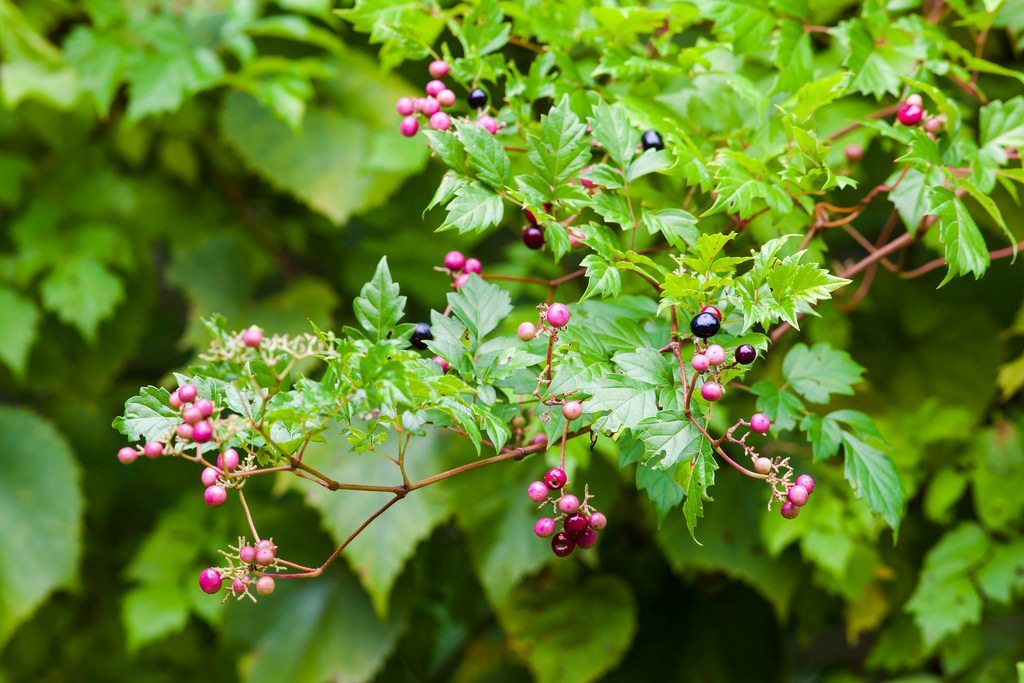
American Wisteria
- (Wisteria frutescens) is a deciduous woody vine that can grow to 30 feet or more. Its showy, fragrant, bluish-purple flowers bloom in drooping clusters 6-9 inches long.
- Flowers first appear in early summer of the third year following planting. The fruits are brown, bean-like pods that persist until winter. The shiny, dark green leaves are compound, bearing 9-15 opposite leaflets.
- Vines need regular pruning in order to encourage flowering and to control shape and size. American wisteria grows best in fertile, moist, well-drained soil and full sun. Spring fertilizer will encourage flowering.
- This plant is an excellent choice for climbing arbors, pergolas, posts, or trellises.
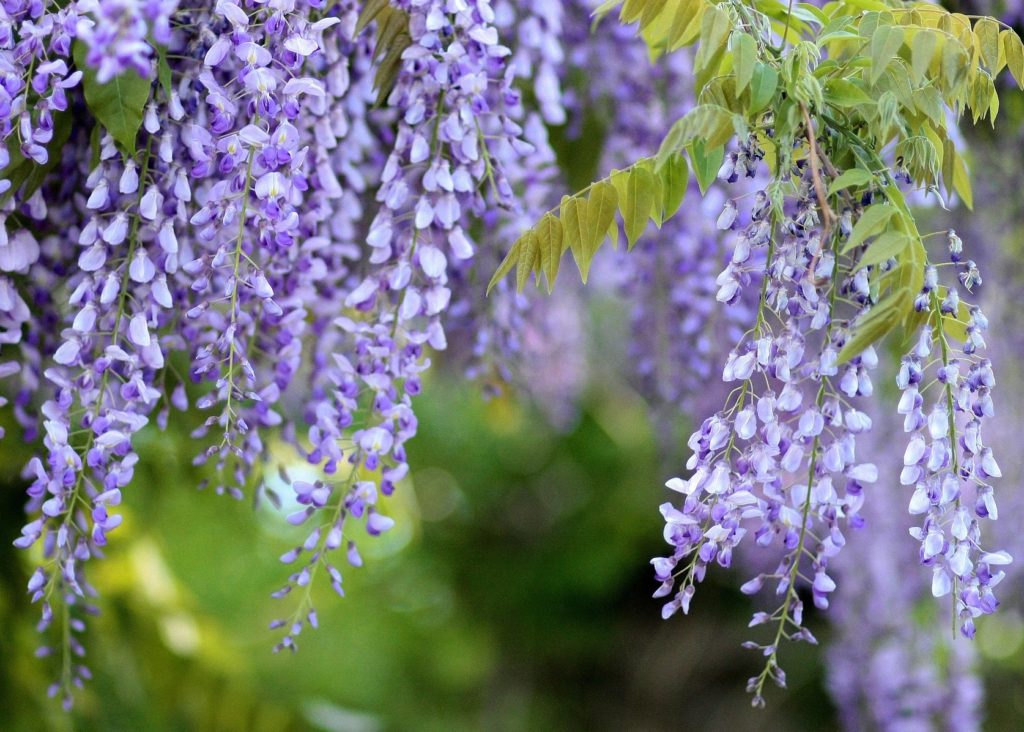
Racoon-grape
- (Ampelopsis cordata) can climb 35-40 feet. It can be trained to a trellis or used as a ground cover in open areas. The leaves resemble those of many grapes.
- Small nondescript flowers bloom June to July, attracting many different pollinators. The berries can be pink, blue or white and provide food for small mammals and birds.
- Raccoon-grape will grow in a variety of soils but fairs best in areas that are not excessively dry. It grows best in full sun. Pruning and mowing can be used to maintain the plant within defined bounds.
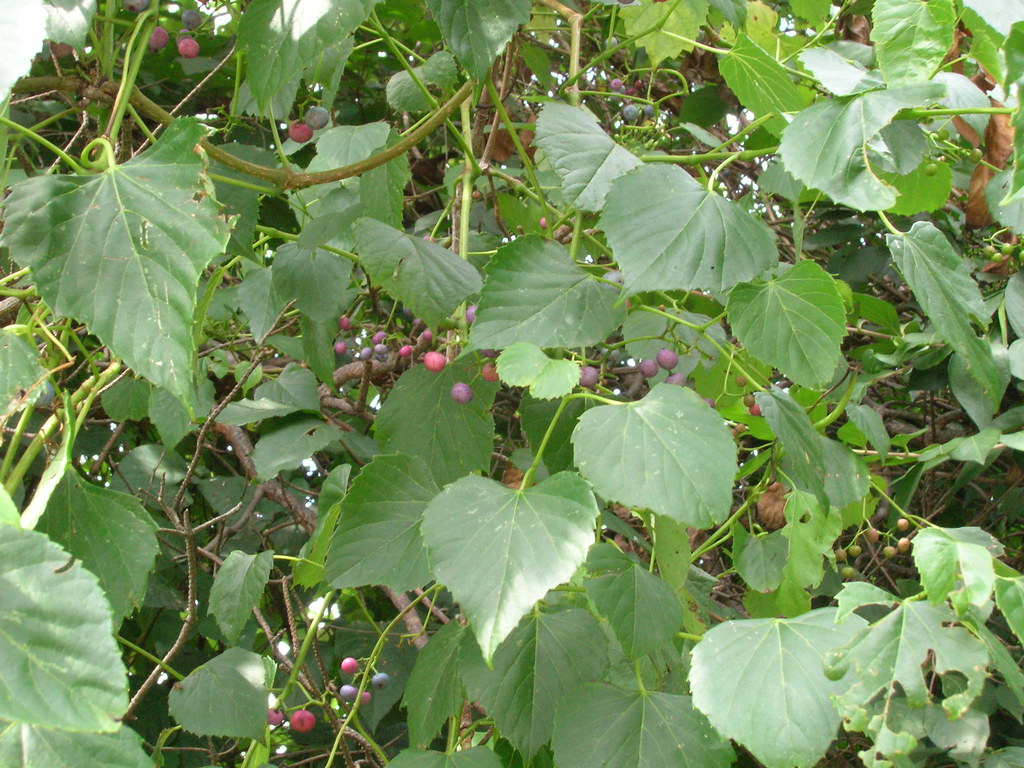
Our Commitment to Create Healthy Parks
Our Team for Healthy Parks crew work to keep the Olmsted Parks healthy by managing invasive species in our Olmsted Parks. Learn more about ecological restoration in this video:








